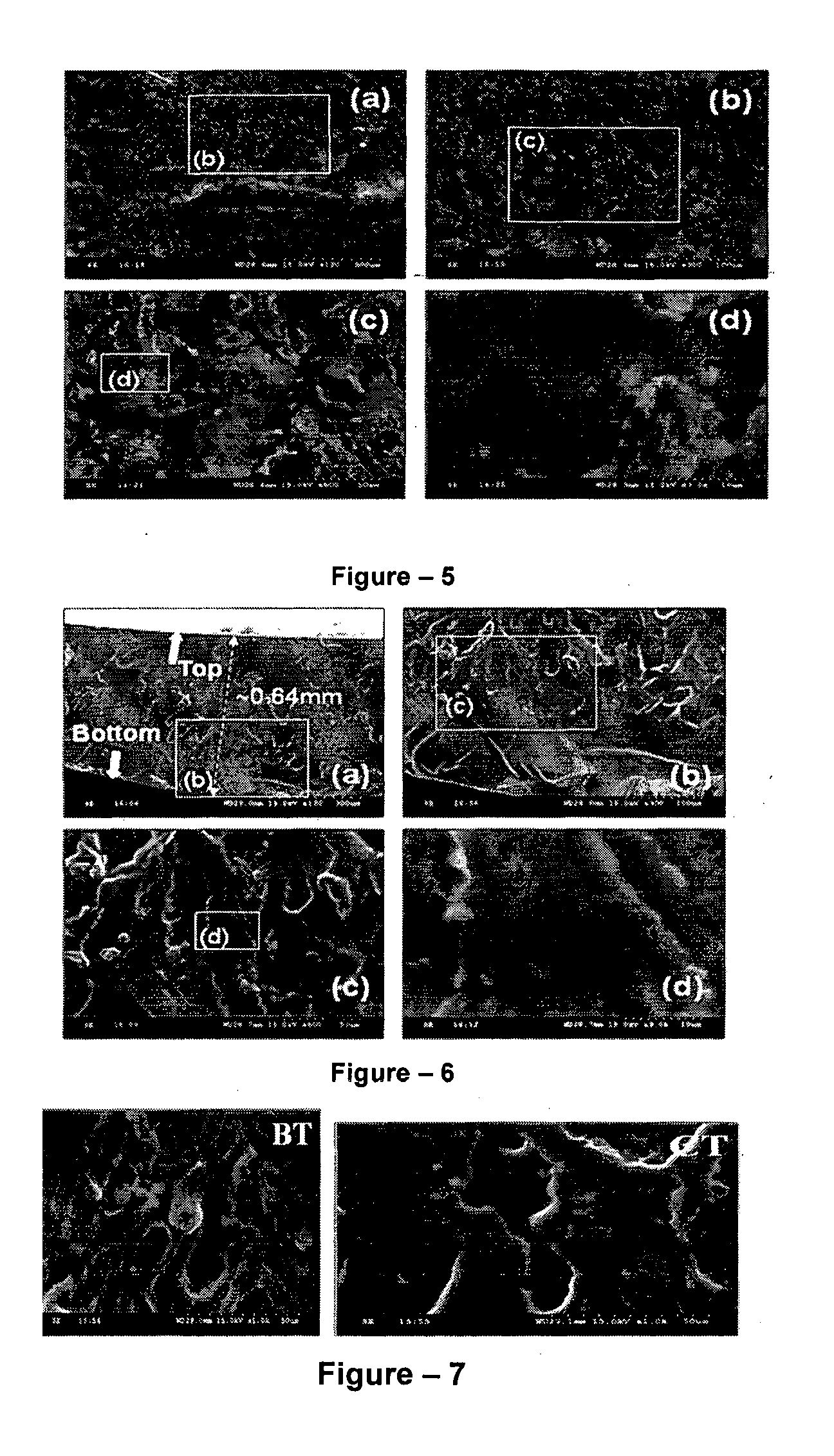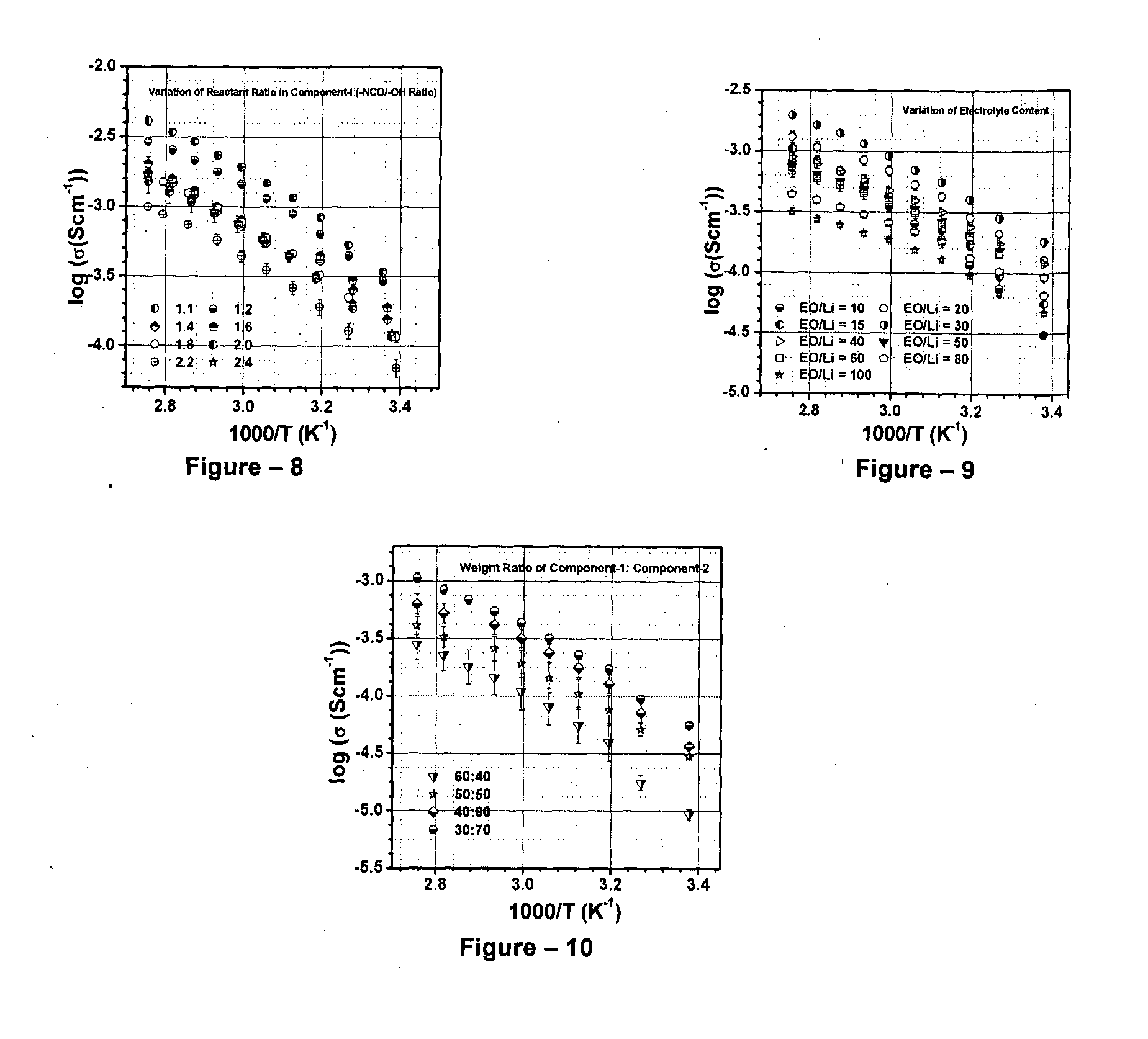High-ionic conductivity electrolyte compositions comprising semi-interpenetrating polymer networks and their composites
a polymer network and electrolyte technology, applied in the direction of non-aqueous electrolyte cells, cell components, electrochemical generators, etc., can solve the problems of reducing performance, prone to fire, loss of electrolyte, etc., and achieves enhanced ionic conductivity and low crystallinity
- Summary
- Abstract
- Description
- Claims
- Application Information
AI Technical Summary
Benefits of technology
Problems solved by technology
Method used
Image
Examples
Embodiment Construction
[0046]The present invention relates to the application of binary or ternary component semi-interpenetrating polymer networks and their nanocomposites to create a homogeneous polymer / polymer-nanocomposite matrix that serves as a non-volatile quasi-solid / solid electrolyte with enhanced ionic conductivity, low crystallinity, thermal stability, and film forming capability. The binary- or ternary-component semi-interpenetrating polymer networks electrolyte composition according to the invention comprises of: a) a polymer networks with polyether backbone (Component-I); b) a low molecular weight linear, branched, hyper branched polymer or any binary combination of such polymers with preferably non-reactive end groups, Component-II and / or component-III (for formation of ternary semi-IPN system); c) an electrolyte salt and / or a redox pair; and d) optionally, a bare or surface modified nanostructured material to form a nanocomposite matrix.-Polyethylene glycol (MW>1000) is a linear crystallin...
PUM
| Property | Measurement | Unit |
|---|---|---|
| Fraction | aaaaa | aaaaa |
| Mass | aaaaa | aaaaa |
| Electrical conductivity | aaaaa | aaaaa |
Abstract
Description
Claims
Application Information
 Login to View More
Login to View More - R&D
- Intellectual Property
- Life Sciences
- Materials
- Tech Scout
- Unparalleled Data Quality
- Higher Quality Content
- 60% Fewer Hallucinations
Browse by: Latest US Patents, China's latest patents, Technical Efficacy Thesaurus, Application Domain, Technology Topic, Popular Technical Reports.
© 2025 PatSnap. All rights reserved.Legal|Privacy policy|Modern Slavery Act Transparency Statement|Sitemap|About US| Contact US: help@patsnap.com



